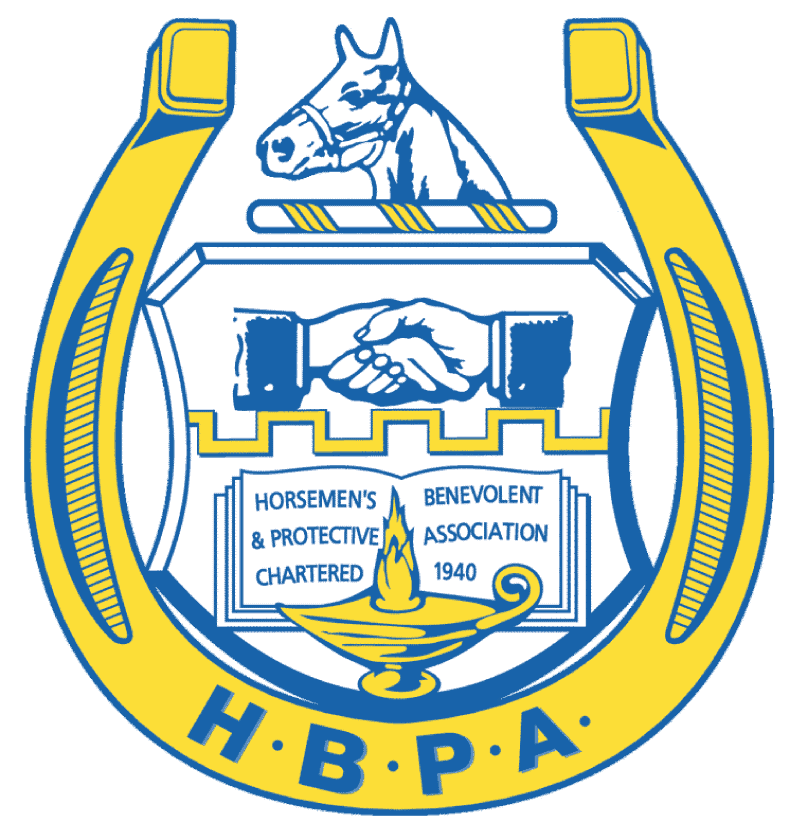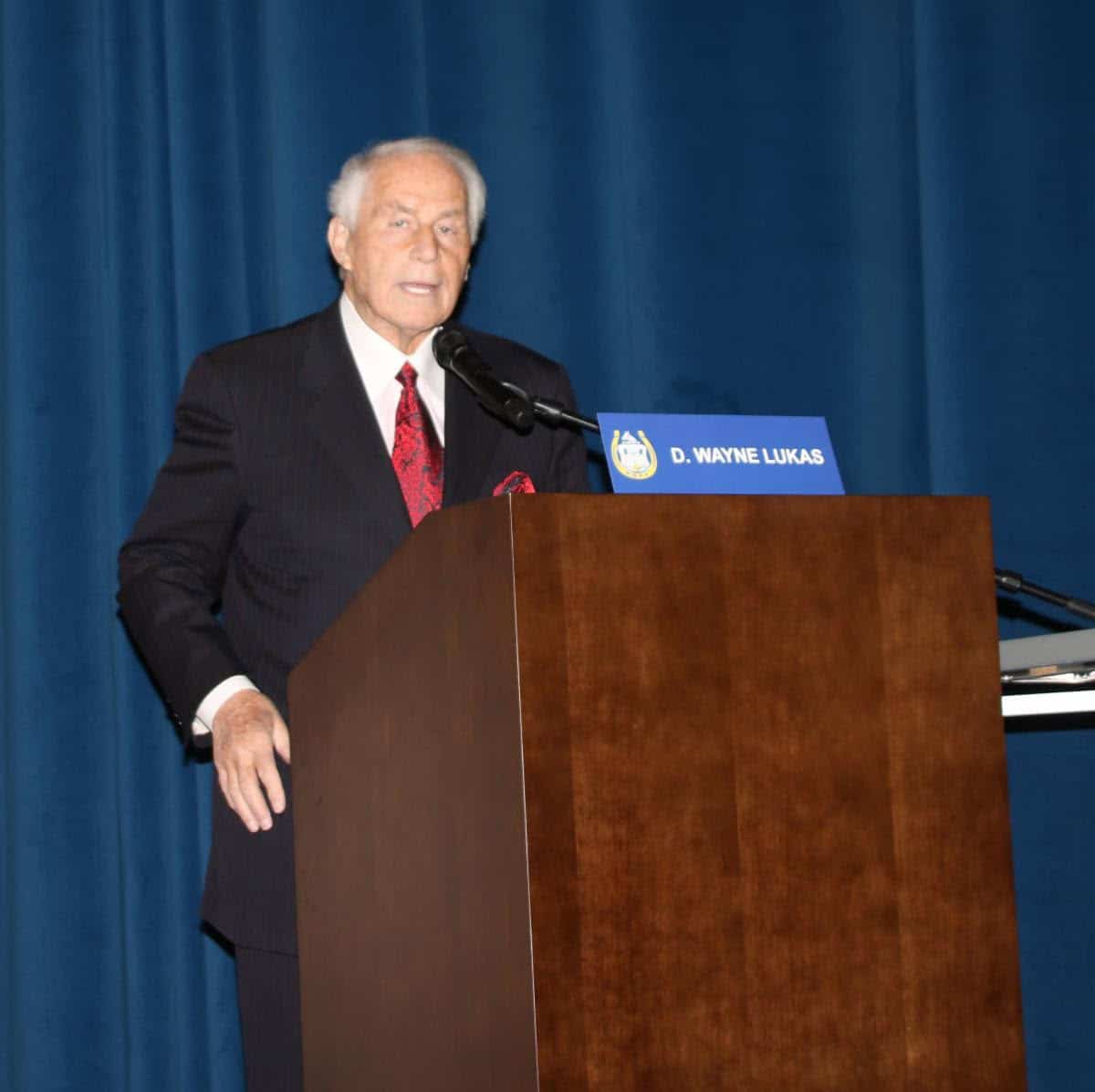HBPA editorial: Guilty Until Proven Innocent
Louisville Courier-Journal
Forward by Jennie Rees
Marty Maline, the long-time executive of the Kentucky division of the Horsemen’s Benevolent and Protective Association, released the following editorial titled “Guilty Until Proven Innocent,” spelling out the issues of the strict standard that trainers are held to for drug positives and overages of therapeutic medication in this era of increasingly sensitive drug testing and the possibilities of environmental contamination.
My opinion: Everyone wants any cheaters to be ferreted out and kicked out of the sport. But in many cases it’s gotten to be “gotcha” chemistry, especially in regards to overages of therapeutic medications in such minute quantities that it can’t possibly impact the performance of the horse.
Trainers and veterinarians at times feel like they’re flying blind trying to stay in compliance. One Breeders’ Cup-winning trainer told me that he sweated out his horse’s post-race test, not because he had pushed any rule in any way but because of the sense of uncertainty that something you have no clue about shows up. Another trainer said he will not graze his horses because of fear they ingest something on the grass.
For those who would say, “Well, just don’t give a horse anything,” that is so overly simplistic and doesn’t address environmental contamination. Horses are athletes, and as such they also have lung infections, allergies, minor aches and stiffness that need to be addressed through modern equine medicine.
For people who think horses race on a lot of drugs and medications, I’ll repeat: Try to pass a post-race horse drug test and you’ll see how strict it is. I’m the first to admit I couldn’t pass it. Coffee? You flunk. Blood-pressure, asthma or allergy medication? Nope (the only exception being Lasix, a diuretic). An aspirin? Not within 24 hours of a race, and getting to be more like 36 hours.
If you think Kentucky, once billed as the rogue state, isn’t incredibly strict, look at all the rulings for overages of therapeutic medications – and the levels to which they were detected, in parts per billion – at khrc.ky.gov and see for yourself. And let’s applaud the Kentucky Horse Racing Commission for publishing levels, which not all states do. If you don’t publish the level at which a violation was detected, how can horsemen and veterinarians protect themselves from an arbitrary change?
As Maline notes in his editorial, the tide might start to be turning for the horsemen in the wake of a Franklin Circuit Court decision reversing a year’s suspension of a trainer in a case where testimony indicates it was a feed-tub mixup with a horse being treated for the neurological disease EPM. The trainer still was sanctioned in an agreed order, but a far less penalty than the year that effectively would have put him out of business. The Kentucky racing commission is in the process of changing language to its medication regulation to address the court’s concern that the regulators didn’t follow their own rule as far as drug classifications.
In full disclosure, for those who don’t know, I am married to a longtime thoroughbred trainer.
GUILTY UNTIL PROVEN INNOCENT
KHBPA Executive Director Martin Maline
Horsemen who are informed by the stewards that they have a positive test are thrust into a situation that may jeopardize their reputation and in some instances their livelihood. Testing has become so sophisticated that positives are regularly listed in picograms i.e. trillionths of a gram. Contamination from other sources, including human contact, horses shipping into receiving stalls that have not been properly sanitized, and a host of other viable possibilities create a scenario that even the most cautious trainer may find himself in the unenviable position of defending himself against a positive test for one of the horses under his/her care.
The trainer responsibility rule (TRR), requires that a trainer shall be responsible for the presence of a prohibited drug, medication substance, or metabolic derivative, including permitted medication in excess of the maximum concentration in horses in his/her care.
Additionally, a trainer shall prevent the administration of a drug, medication, substance, or metabolic derivative that may constitute a violation of this administration.
In many jurisdictions, stewards take the TRR to mean there is no defense to the trainer’s predicament. There are no mitigating circumstances that can alleviate or lessen the established penalties for the various classifications of medications found in the horse’s system. A substance may be found in a horse’s system in such a minute amount that it could have no pharmacological effect on the horse’s performance. Yet, “a positive is a positive,” is the customary response from stewards to this defense.
It is frustrating to horsemen when they determine the reason for the overage in their horse’s system which may be totally unrelated to anything that they have intentionally done, but because of the TRR they are still held accountable.
However, recent decisions in various commission and court proceedings may provide horsemen with at least an opportunity to explain the justification as to why the horse’s sample was compromised. Then the stewards or hearing officers will be required to consider the mitigating circumstances and use their discretion in deciding the outcome.
One such decision is that of Daniel Werre. Mr. Werre was contacted by the stewards. They informed him that the post-race sample of one the horses he trains, who had recently won, revealed traces of Levamisole, a Class A prohibited substance. Mr. Werre explained during his initial hearing with the stewards that his horse was not intentionally administered the medication. In fact, another of his horses was being treated with Levamisole to treat Equine Protozoal Myelitis (EPM) in the stall adjacent to the horse with the positive. The split sample indicated that the substance was identified at a rate of 2.6 nanograms. A nanogram is one billionth of a gram.
The stewards, after hearing the evidence, found Mr. Werre liable for a Class A violation. They suspended his license for one year and fined him $5,000. In addition, the stewards ordered disqualification of the horse and a forfeiture of the purse. Mr. Werre, subsequently appealed the steward’s ruling, but as is often the case, the administrative hearing officer determined that Mr. Werre was ultimately responsible under the trainer responsibility rule and recommended that the KHRC affirm the steward’s ruling.
Mr. Werre next filed an appeal with Franklin Circuit Court. He raised several issues in his petition including: 1) the stewards failed to consider mitigating circumstances, 2) the classification of Levamisole as a class A substance is per se arbitrary and capricious, 3) the classification of Levamisole as a Class A substance violates Mr. Werre ‘s right of due process of the law and 4) the KHRC failed to demonstrate the propriety of the penalty imposed.
The Court overruled the KHRC on several issues. Judge Phillip Shepherd found that there were numerous mitigating circumstances that the KHRC failed to consider when imposing a penalty requiring a one year suspension of Mr. Werre’s training license.
Judge Shepherd also indicated in his ruling that the KHRC has misclassified Levamisole as a Class A substance. He explained that a Class A substance is described as having no legitimate therapeutic indication in the equine athlete and has not been approved for use by the U.S. Food and Drug Administration (FDA). Yet, Levamisole has both a therapeutic use and is FDA approved.
The improper classification of Levamisole led the KHRC to impose a penalty on Mr. Werre that was not proportionate to the seriousness of the violation, and this should have been regarded as a mitigating circumstance.
The KHRC’s failure to consider the mitigating circumstance described above when penalizing Mr. Werre was an abuse of discretion. Given this internal inconsistency, the Court agreed that the classification of Levamisole as a Class A substance is arbitrary and capricious.
Judge Shepherd was highly critical of Dr. Mary Scollay, KHRC equine medical director. He cited two separate instances, Stewart v. KHRC and the present case, where Dr. Scollay, the expert witness for the KHRC, testified that she was unaware of any literature describing the effect of Levamisole on horses. In the present case, Dr. Scollay appeared again as the expert witness for the KHRC and testified that in her opinion Levamisole has a stimulatory effect on horses and that was based on literature she read about humans using Levamisole to cut cocaine.
Judge Shepherd decided that Dr. Scollay’s testimony in Stewart was similar to the testimony she provided in this case (i.e. the attempt to extrapolate the potential effects of a drug on the horse solely from literature concerning its effect on humans). In Stewart as here, Judge Shepherd determined that the KHRC cannot meet its burden and prove the propriety based on evidence about the effects of drugs on humans.
Accordingly, based on the evidence, the Court found that the KHRC has not met its burden of showing the propriety of the one year suspension of Mr. Werre’s trainer’s license and overruled the KHRC in favor of Mr. Were.
In 2014, Princess of Sylmar, finished second in the Grade I Delaware Handicap. Her post race test results reveled an overage of the corticosteroid, Betamethasone.
The Racing Medication and Testing Consortium (RMTC) has established thresholds for twenty-six (26) medications, including Betamethasone, which make up the National Uniform Medication Policy (NUMP). In a newsletter circulated by Joe Gorajec, Executive Director of Indiana Horse Racing Commission, he provides a question and answer section from Dr. Dionne Benson, DVM and Executive Director of the RMTC.
Dr. Benson, in response to the question, “How were the thresholds developed?” explains. The majority of the thresholds, were developed using research studies funded by the RMTC or studies shared with the RMTC from similar international studies….Most of the studies have been published or are in the process of being published in peer reviewed journals.
Yet during a recent National Horsemen’s Benevolent and Protective Association (NHBPA) medication panel discussion, experts emphasized that 19 of the 26 medications making up NUMP have no research to support the findings. Karen Murphy, Pletcher’s attorney, successfully argued that the Betamethasone regulation was built on a foundation of sand. She advised that any state considering adopting the uniform medication regulations developed by the RMTC should hit the pause button. “You cannot defend a regulation without peer-reviewed research,” Murphy explained.
Apparently, Delaware’s Deputy Attorney General in the Civil Division agreed with Murphy’s assessment since he recommended the case against Pletcher be dropped.
The decisions in both the Werre and Pletcher cases may be instrumental to horsemen attempting to prove their innocence in a medication violation.





